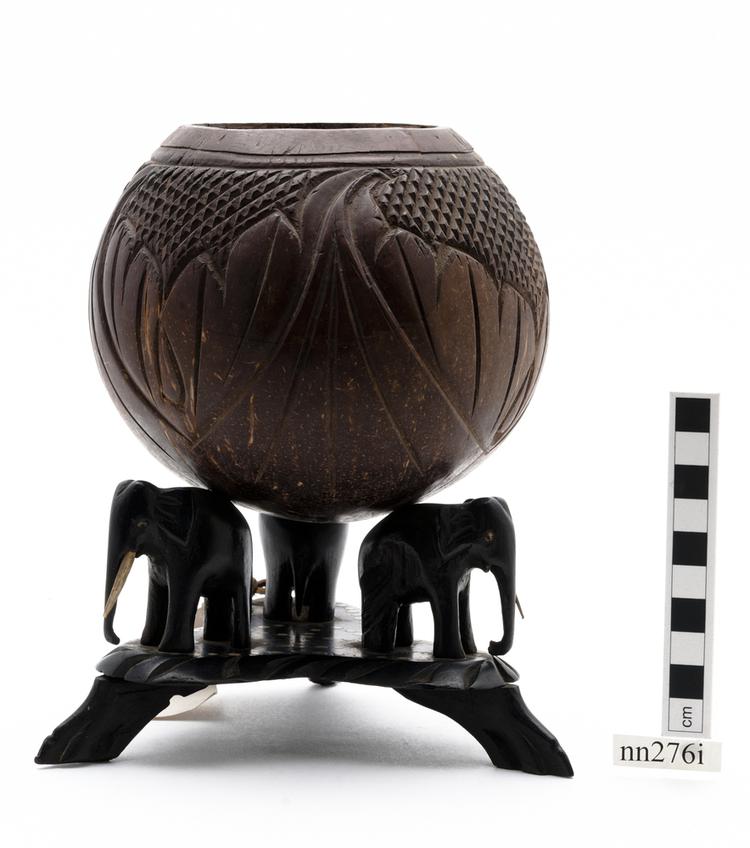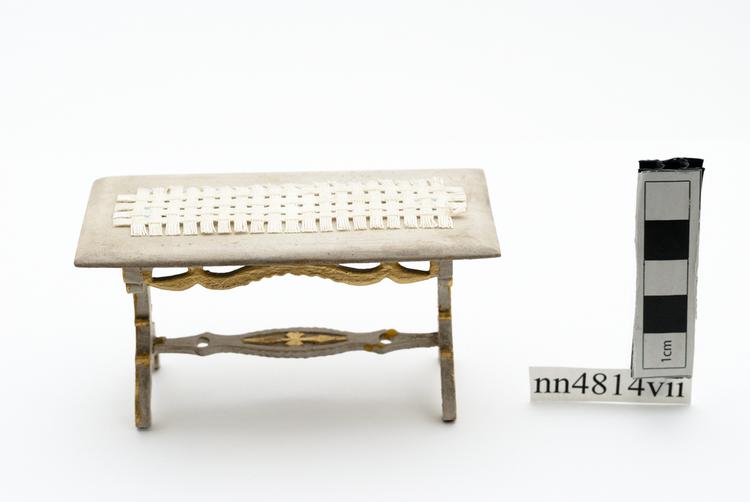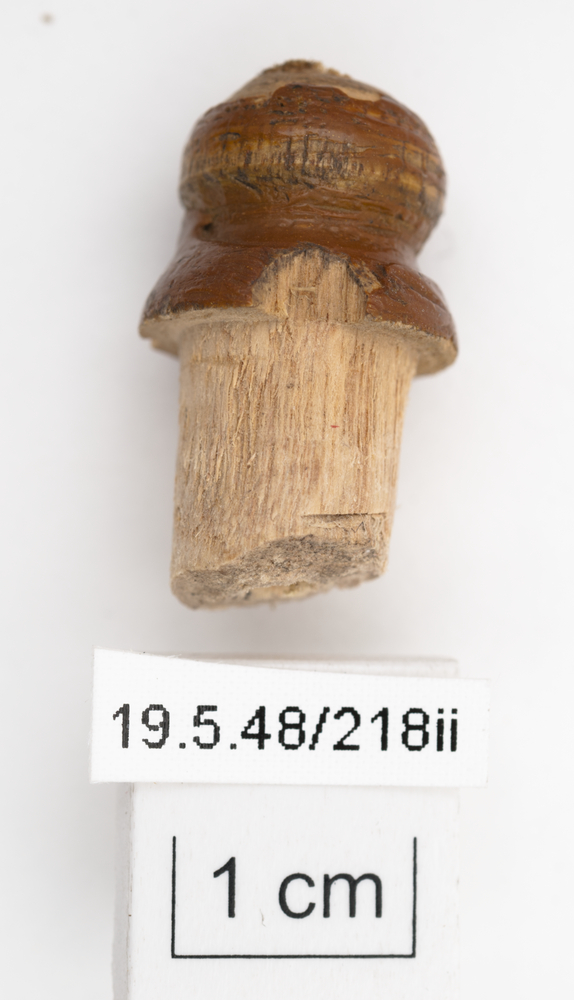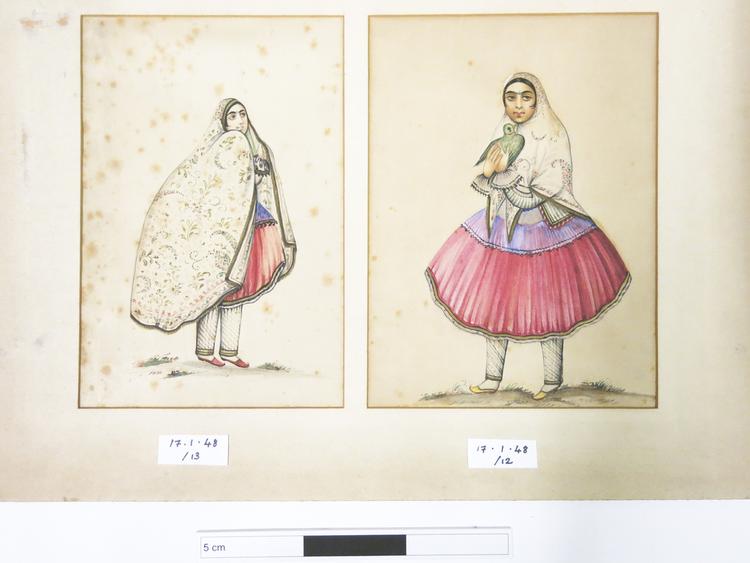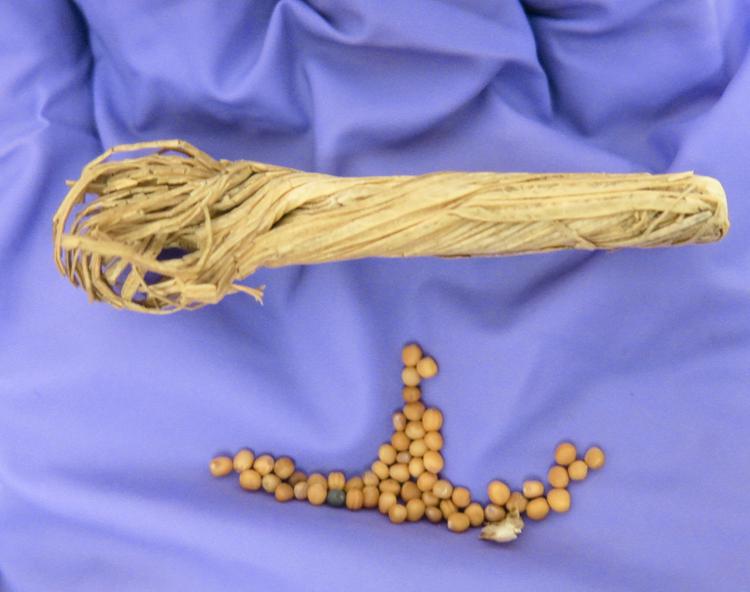
"T'un-rva" horn used both to cure and to curse. The carvings depict various animals including a scorpion and several snakes as well as a chorten. The tip of the horns is carved as a markara head and is stopped with a plug. The contents of the t'un-rva may be mustard seeds.
T’un-rva can be used in rituals of exorcism, black magic and destruction as well as for curing the ill. Typically they are carved in relief with images of poisonous creatures and sealed with a wooden stopper. Before performing any ritual, the horn is filled with magical substances – such as barley or mustard grains, or at times objects like nail clippings, written curses, the hair of an intended victim and blood can also be used. The choice of contents depends on the ritual to be performed, some rituals use “dry” fillings like seeds whilst others use “wet” fillings like blood or alcohol. Sometimes the t’un-rva is hurled towards the victim or negativity, in other instances it is hidden in the home. Sometimes t’un-rva see later use as gunpowder containers. This example contains what may be white mustard seeds. White mustard (Tibetan: yungs-dkar) and black mustard (Tibetan: yungs-nag) both have manifold ritual uses in Tibetan Buddhism. In the context of t’un-rva practice, mustard seeds have destructive capabilities, capable when empowered of eliminating negative forces. Mustard seeds can also be used in rituals of weather control whereby hailstorms can either be conjured forth or prevented.



